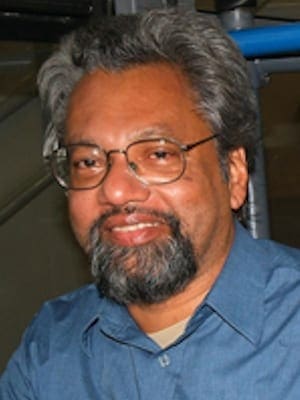Perhaps the most intellectually stimulating book I have read in recent months is Raymond Tallis’ “Aping Mankind: Neuromania, Darwinitis and the Misrepresentation of Humanity” (2011).
Tallis is one of those rare polymaths – a neuroscientist, psychologist and philosopher; and one who writes with sparkling wit as well as erudition.
He brings his formidable skills to bear on the principal target of this volume: scientific reductionism, specifically in the widespread use of neurological science and evolutionary theory to reduce human beings to “mere animals” and the latter to machines.
He labels “neuromania” the assumption that “what neuroscience cannot find in the brain isn’t really real, since the sum total of what we are is the sum total of what is in our brains.”
The errors of muddling correlation with causation, necessary condition with sufficient causation, and sufficient causation with identity lie at the heart of the neuromaniac’s basic assumption that consciousness and nerve impulses are one and the same, and that (to echo a commonly held formulation) “the mind is the creation of the brain.”
Tallis labels “Darwinitis” the tendency to ignore or minimize all that is distinctively human (consciousness, selfhood, free will, that collective space that we call the human world) and to forget all that has happened in the millions of years since we and chimps journeyed in different directions: “the slow-moving journey of gene-based evolution in the chimps’ case; and a much-faster-moving hominid journey, in which initial biological promoters of difference – the upright position, hands, a special kind of gaze – were increasingly overshadowed by cultural promoters such as tools, language and the creation of public spaces and a shared consciousness. Those who overlook this journey are fixing their gaze on the launch pad in the expectation of seeing the rocket that has long since gone into space.”
Our consciousness cannot be found solely in the stand-alone brain; or even just in a brain in a body; or even in a brain interacting with other brains in bodies.
It participates in, and is part of, a community of minds built up by conscious human beings over hundreds of thousands of years.
“This cognitive community is an expression of the collectivization of our experiences through a trillion acts of joint and shared attention. Even those who believe that the human mind began as the activity of the brain of Homo sapiens, must, I shall argue, have to accept that we have gone far beyond brain activity a long time ago.”
Those in the academy and the popular media who propagate the notion that there is no significant gap between man and beast are propagating views whose consequences are not merely intellectually dishonest but dangerous.
“It is a bitter irony,” notes Tallis, “that two of our greatest intellectual achievements – the theory of evolution and neuroscience – should be used to prop up a picture of humanity that is not only wrong but degrading.”
And such views are making steady headway beyond science departments in universities.
We now have new fields such as neuroaesthetics, neuroeconomics and neurocriminology, all attempting to “explain” everything from why we appreciate a Rembrandt painting or trade in subprime mortgages in terms of electro-chemical activity in bits of our brains.
Tallis himself is an atheist, and this fact adds further potency to his searching critique.
Nobody can dismiss his defense of human uniqueness as an attempt to smuggle in theism through the back door. What he is attacking are shoddy science and naive philosophy.
He summons philosophers to wake up from their slumbers and to reassume their fundamental duty: namely, to look critically at the framework and presuppositions within which contemporary thought operates.
“To accept science as the last word on the mind is to overlook that which made science possible: the mind itself … There is at present nothing in matter as understood through natural sciences – no, not even in the wildest reaches of quantum mechanics – that would lead one to expect matter to assume forms in which it would become conscious, self-conscious and knowing, so that it might be able to formulate universal laws that encompass its own existence.”
This is thought at its most refreshing and invigorating. His arguments against naturalism are more penetrating than much of what is found in Christian apologetics.
The most disappointing aspects of the book are his sarcastic asides on religion. Tallis declares that he gave up religion at the age of 12. And his understanding of religion, or at least of Christian language about creation, remains clearly at that early adolescent stage.
Creation is assumed to entail the denial of the evolutionary story and is identified with six-day creationism or intelligent design.
Thus, a dialogue between Raymond Tallis and Christian philosophers of science would be mutually challenging, as well as profoundly enriching for the Christian church.
What a pity that so much effort has been devoted to lambasting the polemics of Dawkins and Harris, when Christians should be reading thoughtful humanists like Tallis.
Vinoth Ramachandra is secretary for dialogue and social engagement for the International Fellowship of Evangelical Students. He lives in Sri Lanka. This column first appeared on his blog.
Secretary for dialogue and social engagement for the International Fellowship of Evangelical Students. He lives in Sri Lanka.

